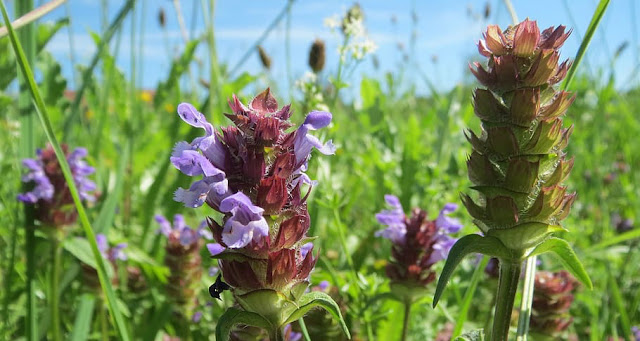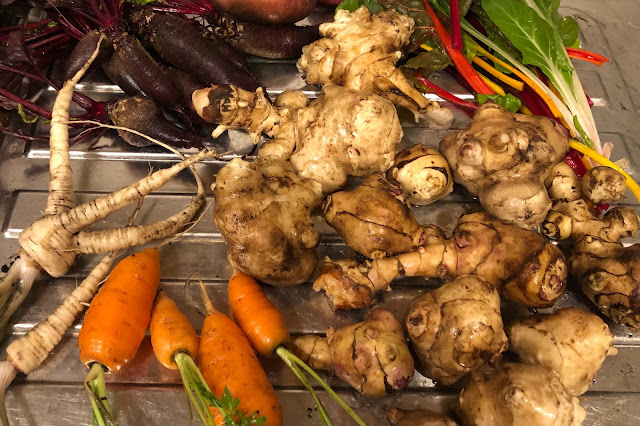What's happening in the garden this month ? Weeds, weeds, weeds! That's what. And spiders ... so many spiders. And because it feels like the wrong time of year for spiders to be stretching across every plant in the garden, I'm crashing through them on a daily basis. How is it with everyone else?
Not surprisingly everything in my garden is responding to warm wet weather - not just the weeds. Everything tells me autumn is just around the corner but when did summer slide out of the picture? (Admittedly we are having a week of heat atm.) But I'm not ready to think about autumn until the equinox (23rd September) and already the days are getting shorter; fading light has me back indoors before 9pm.
Has this cloud got a silver lining? Yes.
Core Blimey apples
These are ready to be plucked from the tree (the Braeburns usually mature later) and blackberries are ripening by the bucketload. There are wild blackberries throughout the gardens here thanks to untamed brambles and, in my kitchen, windfall apples are being peeled, chopped, stewed and eaten or frozen. I love how nature helpfully gives us these lovely ingredients at the same time.
I still have several jars of last year's apple and blackberry jam in the store cupboard so of course, my thoughts turned to pie - and who doesn't love pie! Apples, blackberries and a few elderberries (yes, those are ready for picking as well) went into a pie topped with sweet shortcrust pastry to which I added lemon zest and crushed pecan nuts. Dare I say that the pastry is almost (but not quite) better than the filling?
Compost!
This week the Hotbin composter reached 140F! Now that was a very thrilling moment I can tell you - such is the stuff that a gardener’s dreams are made of.
My previous attempt at making quick compost was a failure. I'd been told by the Hotbin people that as I'd left it unattended for too long, the contents were likely to be anaerobic (without oxygen) and so the process had died. Learning curve: I thought the bin had to be topped up and fully composted before I could start to empty it. (I was wrong.)
So, a few weeks ago I finally emptied, cleaned and half-refilled my Hotbin composter - this time with grass clippings, chopped up comfrey leaves and lots of torn up cardboard to get it up to speed quickly. I'd read that the bin would need to be half filled before adding any kitchen waste (food, plate scrapings, etc) - that way the heat needed to effectively compost food waste had already been generated. Then, within 60 days, fresh compost should be ready to be taken out from the bottom hatch; so far, so good.
Calendula skin cream.
I caught the @LovelyGreens reel on Insta which reminded me of Tanya's recipe for diy skin cream using garden plants. I have loads of unintentional calendula in the veg patch so I like the idea of putting it to good use. I need a soothing cream for my hands and arms which are getting very bashed and bloodied with all the chopping and pruning I'm doing!
Topping up the gaps.
Ever hopeful, even after a disappointing growing season, I've been reading the back of my seed packets and am surprised at how many seeds can be sown in September and October. Always worth giving a late sowing a go so I've been making the most of late summer warmth ...
- I've filled a few pots and planters on the balcony with fresh soil and sown seeds for salad leaves, herbs, radishes, micro leaves and pea shoots.
- Gaps in the Veg Trug garden have been sown with parsley, chervil, baby turnips and radishes.
- Beetroot sown in modules several weeks ago have all now been planted out - and I've only lost one to fox cub digging so far. (Yes, way late but let’s see what happens.)
- Romanesco and ordinary cauliflowers grown to a good size on the balcony have been planted out and have (so far) resisted slug and caterpillar damage..
- Dark Cavalo Nero Kale will be next - I know it's all rather late in the year for this but if it works then the plants should grow away strongly as winter loosens its grip.
















